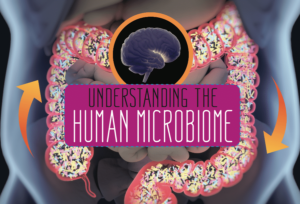People With Overweight/Obesity
Obesity Linked to Lack of Sleep in Childhood
Enforcing bedtime rules may be an important factor in helping kids maintain healthy weight levels. A comprehensive research review of 42 studies with 75,499 participants, conducted by University of Warwick researchers in Coventry, England, found that short sleep durations in infants, children and adolescents were a risk factor for gaining weight and developing obesity. Data analysis showed that children and teens who slept less than others of the same age gained more weight as they grew older and were more likely to become overweight or obese.
Comprehensive Research Project on How to Create an Exercise Habit
24 Hour Fitness® is partnering with the University of Pennsylvania Behavior Change for Good Initiative [BCFG] to support research into what works best for creating lasting exercise habits. With an interdisciplinary team of world-renowned researchers, the BCFG addresses the broader question of how to make positive behavior change stick in aspects of life related to health, education and savings.
The Connection Between Inactivity and Obesity
Can we say that inactivity and obesity are directly related? Scientists are still addressing this issue. The 2018 Physical Activity Council Participation Report shows that 82.4 million people—28% of the American population—are inactive. At the same time, the Centers for Disease Control and Prevention reports that more than one-third (36.5%) of U.S. adults are obese (NCHS Data Brief, No. 219, November 2015).
Exergaming May Improve Independence Among Older Adults
Maybe you’ve thought about integrating exergaming—exercise combined with video games and other elements of technology—into some of your classes or sessions. Don’t forget to include older adults. A recent study found that seniors with mild cognitive impairment (MCI), a precursor to Alzheimer’s, showed significant improvement in certain complex thinking and memory skills after exergaming.
Equal Calories Burned ≠ Same Results
Many people fixate on the number of exercise calories they burn. New research, sponsored by Les Mills International, shows that even when two group fitness activities (indoor cycling and a resistance workout) were matched for duration and caloric expenditure, they did not have equivalent metabolic effects—which could influence long-term training results. Lead study author Nigel Harris, PhD, said, “The type of exercise used to burn those calories . . . impacts the long-term positive effects that exercise has on the body.”
To Grow Healthier, Happier Adults, Raise Fit Kids
Today’s inactive kids are tomorrow’s unhealthy adults. Our society will pay the price for young people’s profound lack of exercise if we fail to turn this trend around. Few behaviors more significantly influence child health than physical activity. Yet children and adolescents are not moving enough, at the expense of their own health as well as that of their communities. More needs to be done to support families and society in raising fit kids.
Stress and Nutrition
Feeling stressed? You’re not alone! The trick is knowing what to do about it.
Research tells us that stress-relieving strategies include making a concerted effort to minimize stressors, engaging in meditation and physical activity, and nurturing strong social relationships.
That’s good advice, but it ignores the common plan that many of us resort to: the “comfort food” strategy.
Body Fat Is Better Indicator of Type 2 Diabetes
Here’s more reason to apply a battery of assessments when determining a client’s health status. Scientists have found that body fat percentage is a more accurate indicator of a person’s risk for prediabetes or type 2 diabetes than other popular measures like body mass index.
What Type of Exercise You Do as a Kid May Determine Your Weight as an Adult
According to new research, the kind of physical activity you do in childhood could predict whether you will be overweight as an adult.
Published in Medicine & Science in Sports & Exercise (2018; 50 [4],
709–14), the study examined the relationship between adult weight gain and the following types of exercise in childhood: running, sports and/or fitness/dance.
Research Update: The Value of Exercise for Women’s Health
Fitness pros have a unique opportunity to take a leadership role by guiding their female clients toward a healthier, movement-oriented lifestyle. This women’s health research update discusses contemporary scientific findings you can use to educate your clients and plan up-to-date programs.
Understanding the Human Microbiome
Exploration of the human microbiome is leading to revolutionary changes in health, wellness and disease management.
High-Intensity Interval Training for Fat Loss
Two recent studies reveal that high-intensity interval training has the ability to produce high-impact fitness gains in a short time frame.
Fit and Fat?
Weight loss may be the number-one goal for your clients, and if pounds don’t melt away quickly, some people may get discouraged and quit. New research strengthens the case that your program is still helping them obtain positive health outcomes, which is motivation to keep striving. In other words: Being fit benefits health even among people with severe obesity.
Behavior Change: What the Research Tells Us
Behavior change psychology has immense value to personal trainers and other fitness pros looking to motivate their clients.
Exercise Doesn’t Have To Be Strenuous To Be Effective
We know that replacing sedentary behavior with physical activity yields numerous benefits. And while high-intensity models are touted as a way to fast-track success, a new study out of Sweden says it’s not necessary to go all-out in order to boost health.
Location Is Everything When It Comes to BMI
The results are in: According to a new study, people who live within close proximity to a gym or activity center weigh less than those who don’t. Access to fast-food restaurants may also affect weight, say the study’s authors.
Fitter Kids Have More Brain Gray Matter
While much research has pointed to a relationship between kids’ fitness and academic performance, we now have a new piece of the puzzle: A recent study found that aerobic fitness and speed–agility levels among overweight and obese children aged 8–11 were independently associated with more gray matter in parts of the brain related to better academic performance.
The Federal Government Keeps Making Nutrition Headlines
The current administration appears determined to weaken federal nutrition policy:
Face the Fats
For years, fat was demonized as dietary “Public Enemy Number One.” Despite the essential roles it plays in the body, including temperature regulation, hormone production and protection of organs, we were told it was also responsible for weight gain and a host of health woes. As a result, the public shied away from the macronutrient and instead stocked their kitchens with skim milk, fat-free snacks and low-fat dressings. This approach backfired spectacularly.
The Well-Stocked Pantry: A Cook’s First Line of Healthy Defense
Coach clients to spring-clean and restock their cupboards, freezers and spice cabinets with sensible, versatile ingredients. These grab-and-go lists and how-to guides provide an approachable game plan for getting started.



















